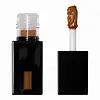What's inside
What's inside
 Key Ingredients
Key Ingredients

 Benefits
Benefits

 Concerns
Concerns

 Ingredients Side-by-side
Ingredients Side-by-side

Bis-Diglyceryl Polyacyladipate-2
EmollientWater
Skin ConditioningDiisostearyl Malate
EmollientDiphenylsiloxy Phenyl Trimethicone
Skin ConditioningPentylene Glycol
Skin ConditioningGlycerin
HumectantOctyldodecanol
EmollientPolysorbate 60
EmulsifyingPolybutene
Dipropylene Glycol
HumectantHydroxyethyl Acrylate/Sodium Acryloyldimethyl Taurate Copolymer
Emulsion StabilisingCeteareth-20
CleansingSqualane
EmollientSorbitan Stearate
EmulsifyingCetyl PEG/PPG-10/1 Dimethicone
EmulsifyingPhenoxyethanol
PreservativePentaerythrityl Tetra-Di-T-Butyl Hydroxyhydrocinnamate
AntioxidantSorbitan Isostearate
EmulsifyingEthylhexylglycerin
Skin ConditioningMangifera Indica Seed Butter
Skin ConditioningCI 77492
Cosmetic ColorantCI 42090
Cosmetic ColorantCI 15985
Cosmetic ColorantCI 17200
Cosmetic ColorantCI 45410
Cosmetic ColorantBis-Diglyceryl Polyacyladipate-2, Water, Diisostearyl Malate, Diphenylsiloxy Phenyl Trimethicone, Pentylene Glycol, Glycerin, Octyldodecanol, Polysorbate 60, Polybutene, Dipropylene Glycol, Hydroxyethyl Acrylate/Sodium Acryloyldimethyl Taurate Copolymer, Ceteareth-20, Squalane, Sorbitan Stearate, Cetyl PEG/PPG-10/1 Dimethicone, Phenoxyethanol, Pentaerythrityl Tetra-Di-T-Butyl Hydroxyhydrocinnamate, Sorbitan Isostearate, Ethylhexylglycerin, Mangifera Indica Seed Butter, CI 77492, CI 42090, CI 15985, CI 17200, CI 45410
C18-36 Acid Triglyceride
EmollientBis-Diglyceryl Polyacyladipate-2
EmollientPentaerythrityl Tetraisostearate
EmollientPolybutene
Tridecyl Trimellitate
EmollientDiisostearyl Malate
EmollientSilica Dimethyl Silylate
EmollientPhenoxyethanol
PreservativeEthylhexyl Palmitate
EmollientPentaerythrityl Tetra-Di-T-Butyl Hydroxyhydrocinnamate
AntioxidantCalcium Sodium Borosilicate
Ethylhexylglycerin
Skin ConditioningCalcium Aluminum Borosilicate
Tocopheryl Acetate
AntioxidantSodium Saccharin
MaskingSorbic Acid
PreservativeAlumina
AbrasiveSilica
AbrasivePolybutylene Terephthalate
Trihydroxystearin
Skin ConditioningCocos Nucifera Oil
MaskingAluminum Hydroxide
EmollientEthylene/Va Copolymer
Emulsion StabilisingAcrylates Copolymer
Tin Oxide
AbrasiveSodium Hyaluronate
HumectantSynthetic Fluorphlogopite
Tocopherol
AntioxidantMagnesium Silicate
AbsorbentGlucomannan
Skin ConditioningParfum
MaskingCI 77891
Cosmetic ColorantCI 77491
Cosmetic ColorantCI 77492
Cosmetic ColorantCI 77499
Cosmetic ColorantMica
Cosmetic ColorantCI 45410
Cosmetic ColorantCI 15850
Cosmetic ColorantCI 75470
Cosmetic ColorantCI 17200
Cosmetic ColorantCI 45380
Cosmetic ColorantCI 15985
Cosmetic ColorantCI 19140
Cosmetic ColorantCI 42090
Cosmetic ColorantFish Oil
Skin ConditioningC18-36 Acid Triglyceride, Bis-Diglyceryl Polyacyladipate-2, Pentaerythrityl Tetraisostearate, Polybutene, Tridecyl Trimellitate, Diisostearyl Malate, Silica Dimethyl Silylate, Phenoxyethanol, Ethylhexyl Palmitate, Pentaerythrityl Tetra-Di-T-Butyl Hydroxyhydrocinnamate, Calcium Sodium Borosilicate, Ethylhexylglycerin, Calcium Aluminum Borosilicate, Tocopheryl Acetate, Sodium Saccharin, Sorbic Acid, Alumina, Silica, Polybutylene Terephthalate, Trihydroxystearin, Cocos Nucifera Oil, Aluminum Hydroxide, Ethylene/Va Copolymer, Acrylates Copolymer, Tin Oxide, Sodium Hyaluronate, Synthetic Fluorphlogopite, Tocopherol, Magnesium Silicate, Glucomannan, Parfum, CI 77891, CI 77491, CI 77492, CI 77499, Mica, CI 45410, CI 15850, CI 75470, CI 17200, CI 45380, CI 15985, CI 19140, CI 42090, Fish Oil
 Reviews
Reviews

Ingredients Explained
These ingredients are found in both products.
Ingredients higher up in an ingredient list are typically present in a larger amount.
This ingredient is lipid-based synthetic skin-conditioning agent derived from adipic acid and a mixture of fatty acids. It is often called a lanolin substitute.
As an emollient, it helps soften and hydrate the skin. Emollients create a barrier on the skin to trap moisture in.
Due to its fatty acid base, it may not be Malassezia folliculitis safe.
Learn more about Bis-Diglyceryl Polyacyladipate-2Ci 15985 is a dye made from petroleum. It is synthetically created and approved by the FDA for use in foods and cosmetics.
The color of this dye is orange/yellow.
This ingredient can be found in makeup, sun care, and skincare.
Learn more about CI 15985Ci 17200 is a synthetic reddish-purple dye.
Ci 42090 is a synthetic dye created from petroleum. It is used to give a bright blue color to cosmetics, medicine, and food.
CI 45410 is a synthetic red-pigment and dye.
It often goes by both Red 28 or Red 27; manufacturers label both ingredients as CI 45410.
This dye is commonly found in makeup because it imparts a vivid color. Some types of this dye change color based on pH level and interaction with moisture:
Your skin has a natural pH of around 4.5 - 5.5.
According to the FDA, CI 45410 is not permitted for use in eye products.
Red 27 is a flourescein dye and commonly used as a fluorescent tracer in medicine.
Learn more about CI 45410Ci 77492 is also hydrated iron III oxide. It's sole purpose is to give a yellow hue to products.
Iron III oxides are classified as inorganic chemicals for coloring.
Synthetically created Ci 77492 is considered safer than those naturally found. This is because the synthetically created version may contain less impurities. Iron oxides are generally non-toxic and non-allergenic.
Learn more about CI 77492Diisostearyl Malate is an emollient and most often used in lip products. It comes from isostearyl alcohol, a fatty acid, and malic acid, an AHA.
As an emollient, Diisostearyl Malate helps create a thin film on your skin to trap moisture in. This helps keep your skin soft and smooth.
Ethylhexylglycerin (we can't pronounce this either) is commonly used as a preservative and skin softener. It is derived from glyceryl.
You might see Ethylhexylglycerin often paired with other preservatives such as phenoxyethanol. Ethylhexylglycerin has been found to increase the effectiveness of these other preservatives.
Pentaerythrityl Tetra-Di-T-Butyl Hydroxyhydrocinnamate (long name, huh?) is a synthetic antioxidant.
It is used to help stabilize other antioxidants or prevent the color from changing in a product.
As an antioxidant, it helps fight free-radical molecules. Free-radical molecules are capable of damaging our cells and other genetic material. Thus, antioxidants may reduce the signs of aging.
This ingredient is oil-soluble.
Learn more about Pentaerythrityl Tetra-Di-T-Butyl HydroxyhydrocinnamatePhenoxyethanol is a preservative that has germicide, antimicrobial, and aromatic properties. Studies show that phenoxyethanol can prevent microbial growth. By itself, it has a scent that is similar to that of a rose.
It's often used in formulations along with Caprylyl Glycol to preserve the shelf life of products.
Polybutene is used to help control the viscosity of a product. This just means it helps adjusts the texture.
It is a polymer and does not get absorbed into the skin due to its large size.
Studies found this ingredient did not irritate skin in concentrations below 15%.
Learn more about Polybutene